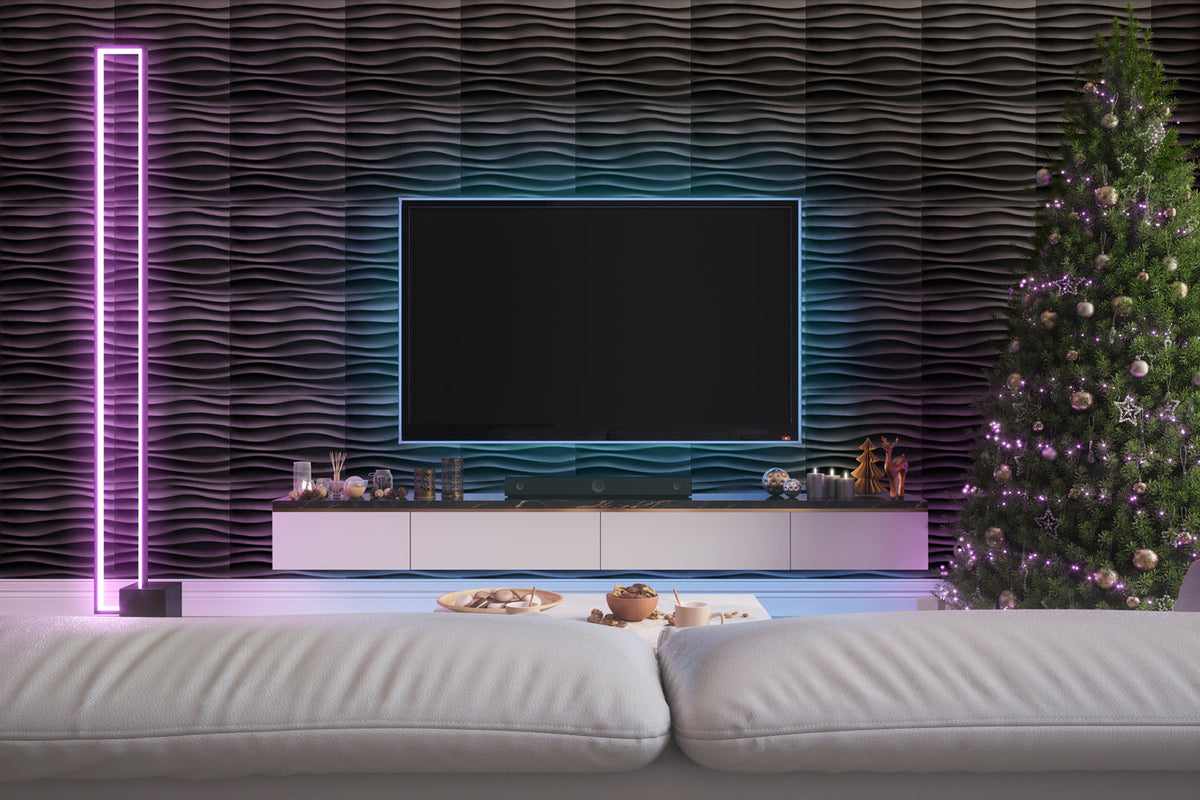
3D Wall Panels vs. Paint: Which Saves More Time & Money?
|
|
Time to read 5 min
|
|
Time to read 5 min
Renovating a space comes with its own set of challenges, and on top of all, homeowners are stuck in two major problems – time and budget. The choice of wall treatments (3D wall panels or paint) directly affects the project timeline and long-term maintenance cost. 3D wall panels are stylish and DIY-friendly while, traditional paint is viewed as an affordable and more familiar option. So, the question arises, which one is better in terms of time and budget? Let's dig it out!
Table of Content
3D wall panels, commonly crafted from PVC (Polyvinyl Chloride) or WPC (Wood Plastic Composite) bring texture and depth to the walls. Their high moisture resistance and soundproofing capabilities also make them stand out. Plus, installation of 3D panels is easy for DIY projects or, you can get professional assistance for larger areas. Minimal upkeep of wall panels extends their life up to 10 years or more.
Traditional paint offers a smooth coating in a wide range of colors and patterns but lacks texture. The painted walls are also prone to mold or discoloration, requiring frequent recoating. Generally, paint can last up to 3 to 5 years depending on the quality and conditions.
Feature |
3D Wall Panels |
Paint |
Texture/Depth |
High (geometric/wood patterns) |
None (smooth surface) |
Water Resistance |
High (ideal for bathrooms/kitchens) |
Low (requires waterproof variants) |
Lifespan |
10+ years (structural durability) |
3–5 years (requires recoating) |
Time is a crucial factor in wall upgradation, whether it is the installation time or the time spent on maintenance.
Regular upkeep of wall panels is not a big deal. A gentle wet wipe with mild soap is all that is required to remove all the dust or stains.
On the other hand, paint scratches, fading, or chipping are common requiring touch-ups to maintain visual appeal.
Further Readings
The initial buying cost of wall panels typically ranges from $3 to $8/sq. ft depending on materials (PVC, MDF, WPC) and the complexity of the design. Wall panels are also DIY-friendly, saving labor cost, while professional installation may add an additional 20-30% to the overall cost.
Painting projects seem to be budget-friendly with lower upfront cost ranging from $1-3$/sq.ft but the process is labor-intensive. It can take up to 60% of the total expenditure.
3D wall panels can stay original for over 10 years with minimal maintenance. Their scratch-free design and water resistance also add to their life, making them cost-effective in the long run. While painted walls need 2 to 3 recoats over 10 years, collectively exceeding the panel cost.
It is now proven that commercial spaces save 40% on maintenance with panels. A case study by Walston Architectural Products also demonstrates the cost-effectiveness of wall paneling in business models.
Choosing between wall panels and paint entirely depends on your preferences and the space conditions. Here is a general scenario-based breakdown for your ease:
Create an accent wall (TV backdrop or headboard wall) with blended use of wall panels and paint for an eye-catching look.
Follow the detailed step-by-step process to install 3D panels and maintain them properly.
Surface prep is the key step in panel installation to ensure a firmly secured wall. So, make sure the wall is clean and tidy. You can simply remove dust with a damp piece of cloth or degrease the surface with a mild detergent.
Next, carefully inspect for wall smoothness and check any small cracks or holes. Using a self-leveling mortar is the best approach to fix this unevenness on the wall. Be sure to let the mortar dry before the next step.
After all measurements and cuttings of the panels to fit the wall perfectly, it is now the adhesion time. Apply specialized glue (Mapei Super Grip) evenly on the panel’s back side and press it against the wall in the center. Gradually press outwards towards the edges to avoid air bubbles.
Hold the panel for a few seconds for stronger bonding. Now wait and let the adhesive cure for at least 24 to 48 hours.
Unlike traditional rollers, sprayers are an efficient way to evenly apply paint to large or textured areas. They are 50% faster than rollers and make the wall smooth for a professional finish. Paint sprayers are also ideal for large spaces or rooms with intricate designs, such as ceilings, corners or textured walls.
3D wall panels need zero maintenance. Their easy-to-clean surface requires a gentle wet wipe with no need for extensive chemicals. In fact, harsh cleaners can result in surface damage.
Conversely, paint needs occasional touch-ups on faded or chipped sides of the wall. So, the best practice is to save the paint container or use a color matching kit to get the exact shade of the paint.
Yes, panels can be installed over old tiles, but it is recommended to clean the surface and use a level mortar to make the wall even.
Yes, panels can mimic 3D panel texture up to some extent but, achieving exact depth and texture is not possible.
Some eco-friendly panels, such as WPC or recycled plastic, are available in the market, while V0C-free options also exist to meet indoor standards.
In conclusion, 3D wall panels are actual time and budget savers. Their minimal upkeep and 30% lower cost over 10-year period compared to the paint makes them stand out. On the other hand, paint is a considerable choice for short-term or cost-effective wall treatments.


